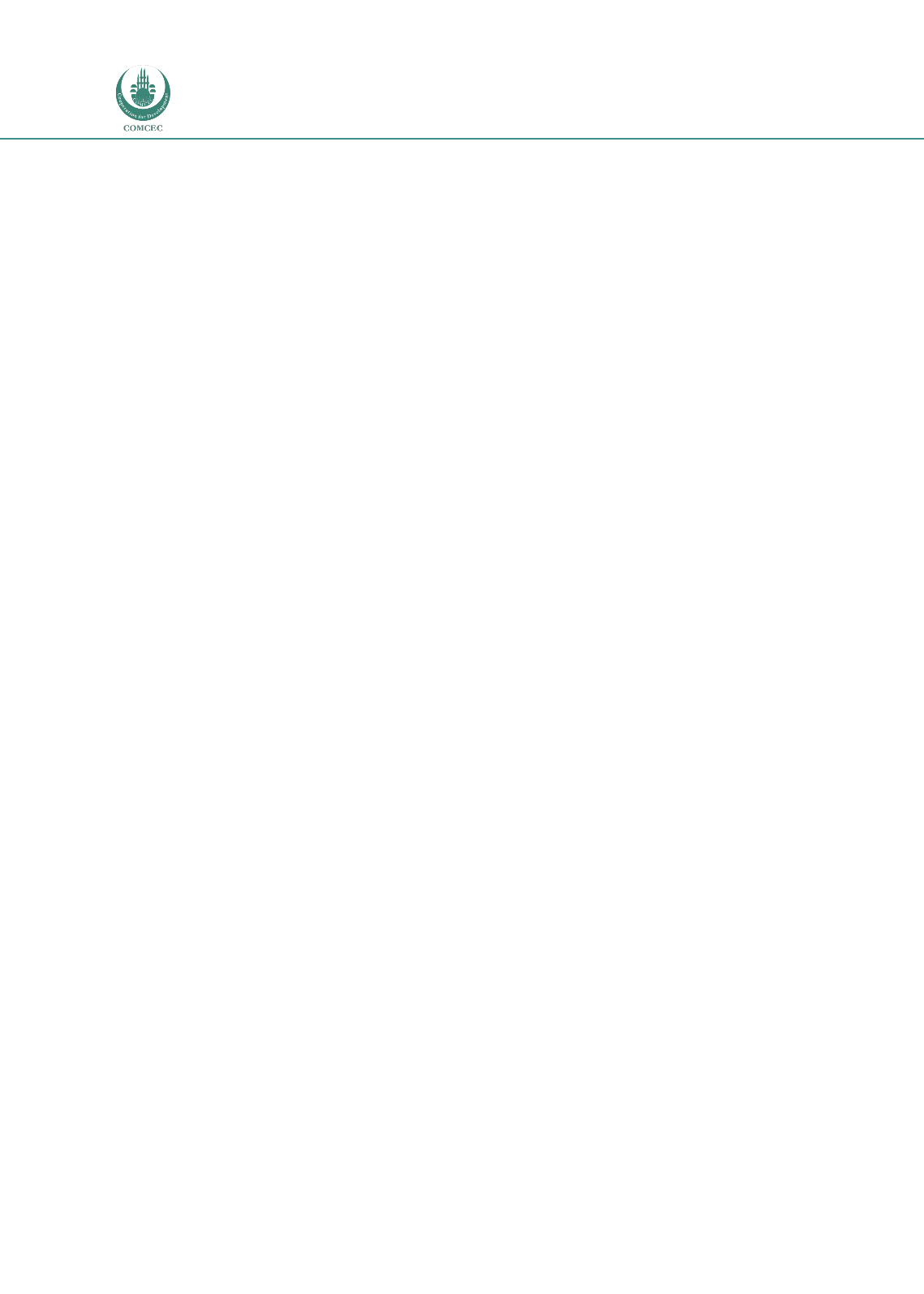

Promoting Agricultural Value Chains:
In the OIC Member Countries
72
Due to excess production of dates, decreasing consumption, and weak processing and export
activities of dates, a surplus of dates of about 400,000 tonnes was recorded for 2010, which is
expected to exceed 600,000 tonnes by 2022 (El-Habba & Al-Mulhim 2013). Therefore, various
studies call for a renewed export strategy for Saudi Arabian dates (e.g. Al-Abbad et al., 2011;
Elsabea, 2012; Ali et al., 2014).
Currently, most exports of dates from Saudi Arabia are directed to low income countries from
the Middle East, at low prices, while only marginal quantities are exported to high income
countries at higher prices (Muhsen et al., 2013). In 2009/2010, the majority of exports went to
Yemen (49 percent), the Gulf countries (24 percent) and Syria, Lebanon and Jordan (together
12 percent) (Elsabea, 2012). In 2013, Egypt replaced Yemen as the main importing country,
but it remains to be seen whether this was incidental or indicates a more lasting trend (Beers
et al., 2014). Exports to Europe account for only 2 percent of total date exports (Elsabea,
2012).
One explanation for this dominant focus on Middle Eastern countries is that Saudi Arabia is
part of the Gulf Cooperation Council (GCC) which has implemented a Free Trade Agreement
and customs union that encompasses, next to Saudi Arabia, Bahrain, Kuwait, Oman, Qatar and
the United Arab Emirates. Saudi Arabia is also party to the Greater Arab Free Trade Area which
ensures tariff-free access to other traditional export destinations, such as Yemen, Syria,
Lebanon and Jordan. Moreover, Middle Eastern countries have a high level of date
consumption and show high demand for Saudi Arabian date varieties (Al-Shreed et al., 2012).
On the other hand, entry barriers to the EU market are significantly higher. Firstly, Saudi
Arabian dates face intense competition to access the European market, particularly from
Tunisia, Iran and Egypt who are able to supply more sought after date varieties (El-Juhany,
2010). Saudi dates are generally not well known on the European market and lack a premium
brand of high quality dates that could reap high prices (Beers et al., 2014). High levels of
bacterial contamination further impede access to the EU (Elsabea, 2012). Secondly, Saudi
Arabian date exporters lack long-standing ties with existing European importers. For instance,
Tunisia and Iran have strong connections to French importers, who not only supply the French
market but cater to the entire North European market (Beers et al., 2014). This indicates that
much of the value of European imports does not reach the producing countries but is captured
by French importers (Botes & Zaid, 2002).
Additional export markets for the future have been identified to lie in Malaysia and Indonesia
(countries with a large Muslim population where date consumption is particularly high during
Ramadan), Russia and Eastern European countries (Al-Shreed et al., 2012).
Studies also indicate that there is significant potential for product diversification and value-
adding activities aimed at export markets, particularly increased processing, including frozen
dates, pastries from dates, date syrup, jam and vinegar (Al-Shreed et al., 2012). As date seed
contains about 6-12 percent oil, oil extraction could be another opportunity (Zaid, 2002).
5.1.6
Conclusions and lessons learned
Dates are an important product in Saudi Arabia, particularly for satisfying high domestic
consumption. The date value chain seems to benefit from a generally supporting institutional
environment, with an enabling legislative framework created by the Saudi Government and
several research institutes dedicated to date palm.

















